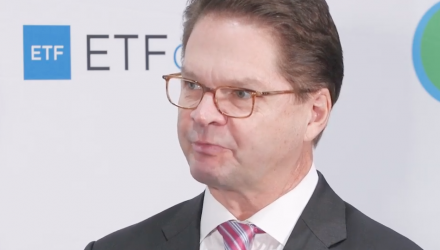Without a clear sign of a recession popping up anytime soon, investors continue to fuel the equity market rally. However, investors should consider ETF strategies that are able to limit some of the potential downside risks ahead.
“We’re constructive on risk-taking,” Jim McDonald, Chief Investment Strategist at Northern Trust, said at the Charles Schwab IMPACT conference. “There’s been some concern that the economy globally is softening and that we’re at risk of a recession. We don’t think that’s the case. We’re starting to see some improvement in some of the leading indicators. So, we are constructive on risk-taking into 2020. We want some protection, though, against some of the areas that do present some bigger risk, primarily trade.”
For example, investors who are faced with an increasingly volatile market environment may turn to quality and low-volatility ETF strategies, such as the FlexShares US Quality Low Volatility Index Fund (NYSE: QLV), FlexShares Developed Markets ex-US Quality Low Volatility Index Fund (NYSE: QLVD) and FlexShares Emerging Markets Quality Low Volatility Index Fund (NYSE: QLVE).
The three ETFs utilize a quality screen to provide exposure to high-quality companies with lower absolute risk, thereby limiting potential future volatility. The quality screen analyzes a broad universe of equities based on key indicators such as profitability, management efficiency, and cash flow, and then excludes the bottom 20% of stocks with the lowest quality score. The index is then subject to regional, sector and risk-factor constraints, in order to manage unintended style factor exposures, significant sector concentration, and high turnover.
Investors should keep an eye on company stocks that exhibit low-volatility traits in today’s markets. Equities still serve a purpose in a diversified investment portfolio, global yields are still depressed and the shifting demographics with a growing group of working millennials could further drive demand for stocks.
Additionally, quality should not be conflated with low volatility, but there are times when quality stocks display low volatility traits. That was the case during the fourth quarter of last year’s market swoon, indicating that the quality factor can provide some protection during times of elevated market stress.
Watch the full interview between ETF Trends’ Tom Lydon and Jim McDonald:
For more ETF-related commentary from Tom Lydon and other industry experts, visit our video category.

